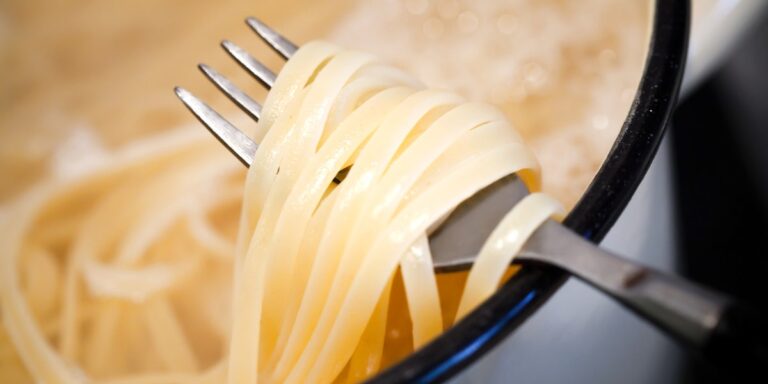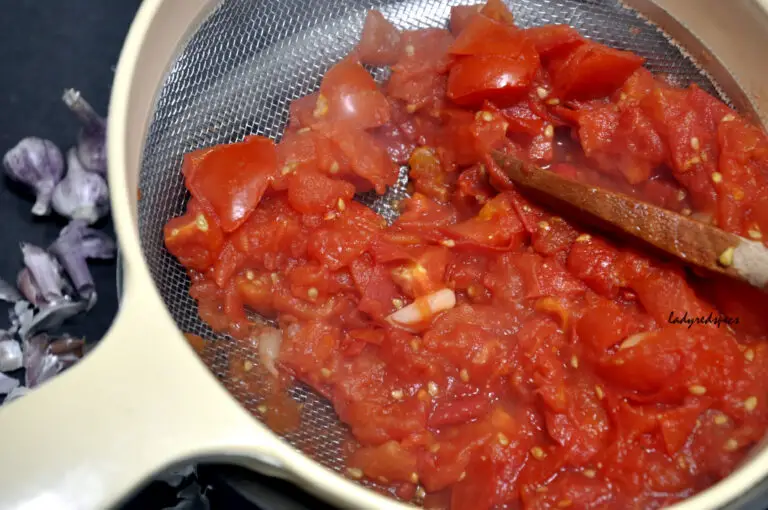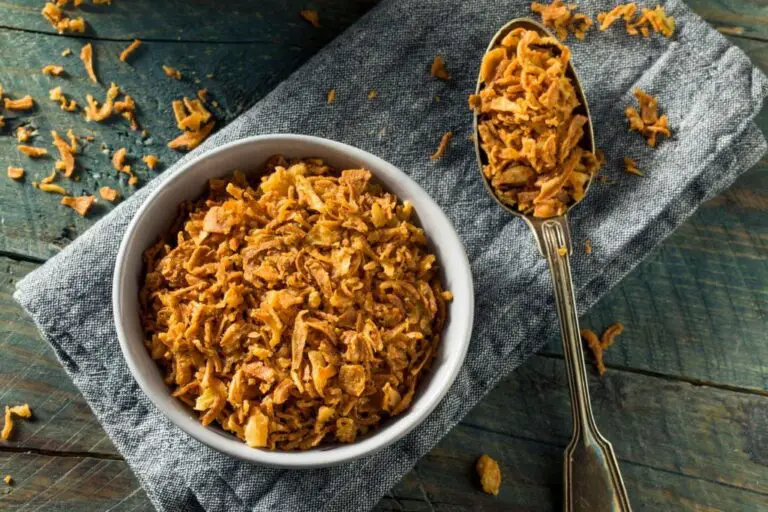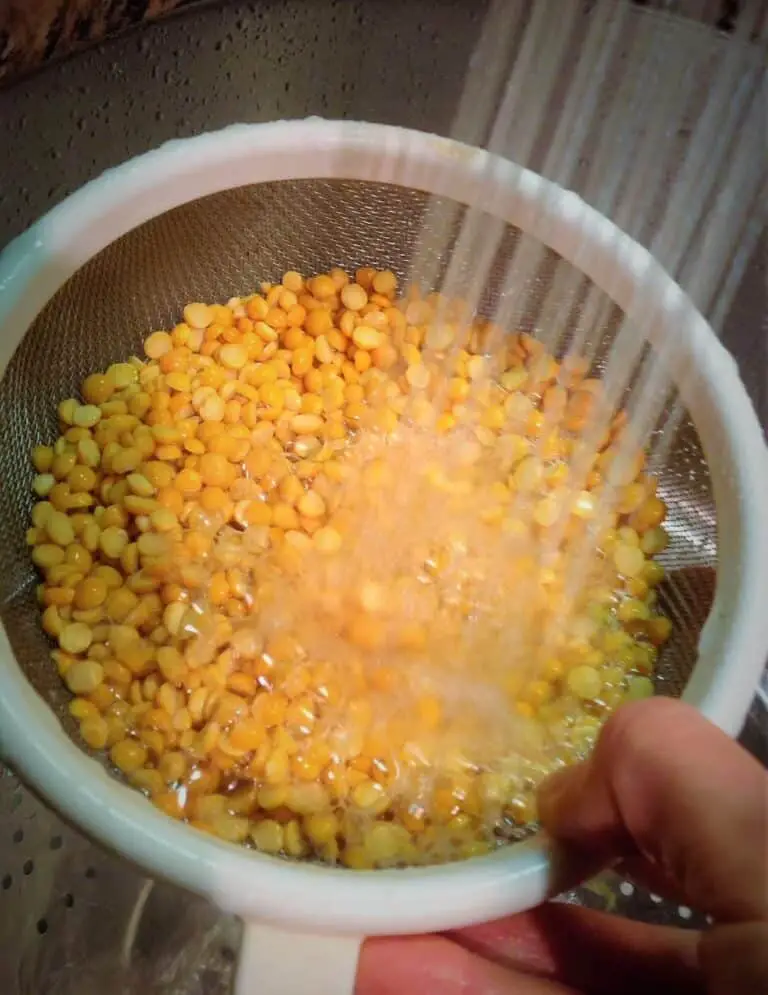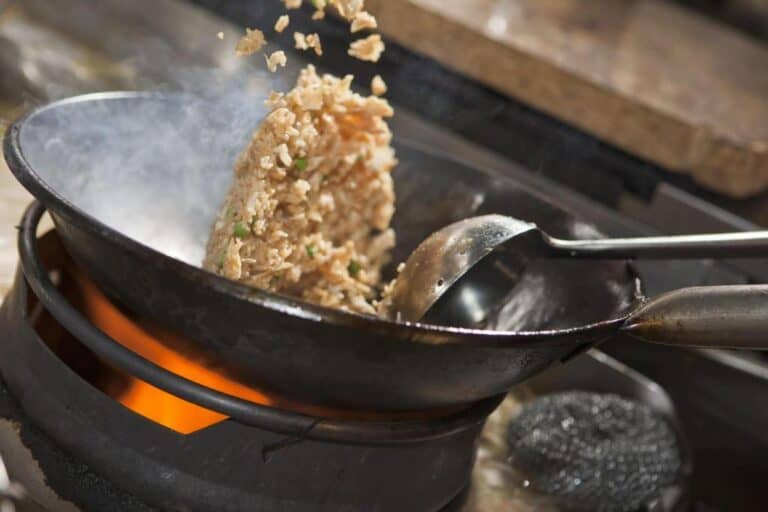Can You Dehydrate Brussels Sprouts and How to Do It?
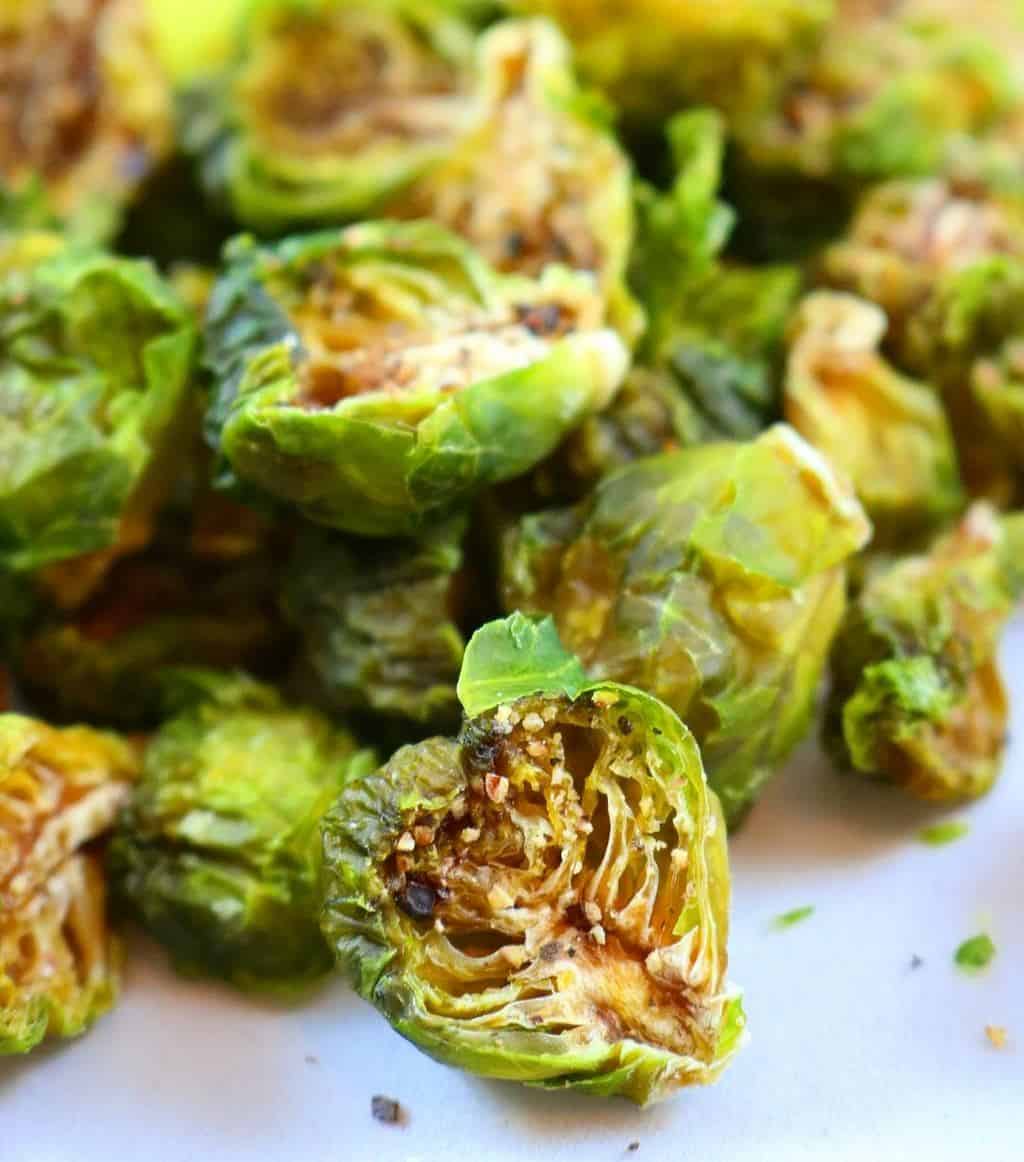
Brussels sprouts, those petite cruciferous vegetables that often divide opinions, have become increasingly popular in the culinary world. While roasting, sautéing, and even steaming Brussels sprouts are well-known methods, have you ever considered dehydrating them?
Dehydrating Brussels sprouts can be a unique and exciting way to preserve their flavors while creating a delightful and nutritious snack. But the question remains: can you dehydrate Brussels sprouts, and if so, how can you do it? The answer is a resounding yes!
Dehydrating Brussels sprouts is not only possible but also a fantastic way to extend their shelf life and explore a whole new dimension of taste and texture. By removing the moisture from the sprouts, you concentrate their flavors and create a satisfyingly crunchy snack that can be enjoyed on its own or added to various dishes for an extra burst of flavor.
In this article, we will guide you through the process of dehydrating Brussels sprouts, from preparation to storage. We’ll explore different methods, such as using an oven or a food dehydrator, and provide tips and tricks to ensure the best results.
So, if you’re ready to embark on a culinary adventure with Brussels sprouts, join us as we dive into the fascinating world of dehydrating these little green gems.
Why Do You Need to Dehydrate Food?
Dehydrating food has been a practice for centuries, dating back to ancient civilizations. But why do we need to dehydrate food in the first place? The answer lies in the preservation and concentration of flavors, as well as the extension of shelf life.
By removing moisture from food, we create an environment that inhibits the growth of bacteria, molds, and yeast, effectively preserving the food and preventing spoilage.
Dehydrating food also helps to concentrate its natural flavors. As moisture is eliminated, the flavors become more pronounced, resulting in a more intense taste. This can be particularly appealing for fruits, vegetables, and herbs, as dehydration can enhance their sweetness, tanginess, or earthy notes. The concentrated flavors can add a delightful depth to dishes or create flavorful snacks.
Moreover, dehydrated food has an extended shelf life compared to fresh produce. Without moisture, the growth of microorganisms is significantly hindered, allowing the food to be stored for longer periods without the need for refrigeration. This is especially beneficial in situations where fresh food may not be readily available, such as during camping trips, hiking expeditions, or emergency situations.
Benefits of Dehydrating Brussels Sprouts
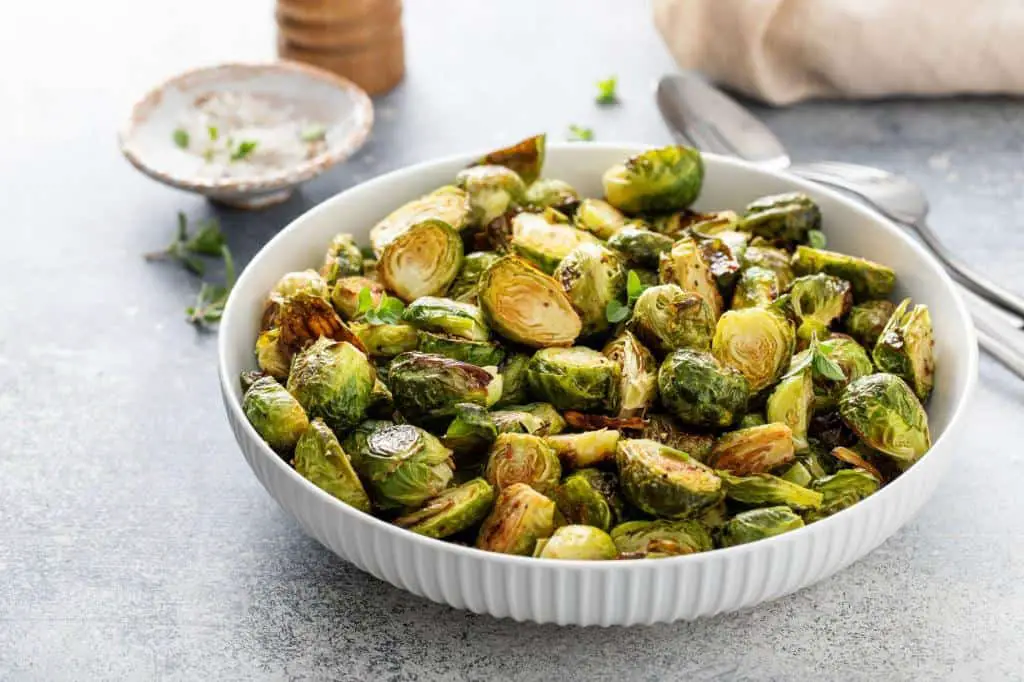
There are numerous benefits to dehydrating Brussels sprouts, making it a worthwhile endeavor for any culinary enthusiast. Here are some of the key advantages:
- Preservation: Dehydrating Brussels sprouts allows you to preserve their freshness and nutrients for an extended period. By removing moisture, you inhibit the growth of microorganisms that can lead to spoilage, enabling you to enjoy your sprouts well beyond their usual shelf life.
- Concentrated Flavor: Dehydration intensifies the natural flavors of Brussels sprouts. As moisture is extracted, the flavors become more concentrated, resulting in a more pronounced taste. The earthy and nutty notes of Brussels sprouts are enhanced, offering a delightful burst of flavor in every bite.
- Convenient Snacking: Dehydrated Brussels sprouts make for a convenient, on-the-go snack. They are lightweight, portable, and require no refrigeration, making them an excellent choice for hiking, camping, or any time you need a nutritious and flavorful snack.
- Versatility in Culinary Applications: Dehydrated Brussels sprouts can be used in a variety of culinary creations. They can be ground into a powder and used as a seasoning or added to soups, stews, or salads to add a unique texture and flavor profile. They can also be rehydrated and used in dishes like stir-fries or roasted alongside other vegetables.
- Nutritional Value: Dehydrated Brussels sprouts retain their nutritional value even after the dehydration process. They are a rich source of vitamins, minerals, and dietary fiber, making them a healthy choice for snacking or as an addition to various dishes.
- Reduced Food Waste: Dehydrating Brussels sprouts is an excellent way to reduce food waste. Instead of letting them go to waste when they’re nearing their expiration date, you can dehydrate them and enjoy them for a longer period of time.
Dehydrate Brussels Sprouts (Step-by-Step Guide)
Now that we understand the benefits of dehydrating Brussels sprouts, let’s delve into the process itself. Follow these simple steps to transform fresh Brussels sprouts into tasty dehydrated snacks:
Step 1: Selecting and Preparing Brussels Sprouts
- Start by choosing fresh and firm Brussels sprouts. Look for sprouts that are small to medium in size and have tight, compact leaves. Avoid sprouts that are discolored, bruised, or have yellowed leaves, as they may not dehydrate well.
- Rinse the Brussels sprouts under cool, running water to remove any dirt or debris. Pat them dry with a clean kitchen towel or paper towels.
- Trim the stem end of each sprout and remove any loose or damaged leaves. This step helps ensure even drying and improves the overall appearance of the dehydrated sprouts.
Step 2: Blanching Brussels Sprouts
Blanching is an essential step in the dehydration process as it helps retain the vibrant green color and nutrients of Brussels sprouts. Follow these instructions to blanch your sprouts:
- Fill a large pot with water and bring it to a rolling boil.
- Carefully place the prepared Brussels sprouts into the boiling water.
- Allow the sprouts to blanch for about 3 minutes.
- After blanching, quickly transfer the sprouts to a bowl of ice water to stop the cooking process and cool them down.
- Once cooled, drain the sprouts thoroughly and pat them dry with a towel.
Step 3: Slicing Brussels Sprouts
Slicing the Brussels sprouts into thin, uniform pieces ensures even drying and faster dehydration. Here’s how to do it:
- Take each blanched and dried Brussels sprout and slice it into thin cross-sections. Aim for slices that are approximately ¼ inches thick.
- You can use a sharp knife or a mandoline slicer for this task. Exercise caution while handling sharp objects.
Step 4: Dehydrating Brussels Sprouts
Now comes the main event: dehydrating the Brussels sprouts. Follow these instructions for optimal results:
- Arrange the sliced Brussels sprouts in a single layer on dehydrator trays. Ensure that there is enough space between each slice to allow air to circulate freely.
- Set the dehydrator to a temperature of around 125°F to 135°F (52°C to 57°C). This temperature range is ideal for drying Brussels sprouts effectively without overheating them.
- Let the sprouts dehydrate for approximately 8 to 10 hours, or until they become crispy and brittle. The exact drying time may vary based on the thickness of the slices and the moisture content of the sprouts.
- Periodically check on the progress of the dehydration process and rotate the trays if needed to ensure even drying.
Step 5: Storing Dehydrated Brussels Sprouts
Congratulations! You’ve successfully dehydrated your Brussels sprouts. To store them properly and maintain their quality, follow these storage guidelines:
- Allow the dehydrated sprouts to cool completely before transferring them to airtight containers such as glass jars or resealable bags.
- Store the containers in a cool, dark place away from direct sunlight and moisture. A pantry or cupboard works well for this purpose.
- When stored correctly, dehydrated Brussels sprouts can last for several months, retaining their flavor and nutritional value.
Enjoying Dehydrated Brussels Sprouts
Dehydrated Brussels sprouts are a delightful snack on their own, but they can also be used to add a tasty twist to your favorite dishes. Here are a few creative ways to enjoy them:
- Snack on them: Dehydrated Brussels sprouts make a delightful and healthy snack on their own. Their crispy texture and concentrated flavors are irresistible.
- Salads: Crush or crumble dehydrated Brussels sprouts over salads for an interesting twist. They add a satisfying crunch and a unique taste to your greens.
- Soups and stews: Rehydrate the dehydrated sprouts by soaking them in hot water or broth before adding them to soups and stews. They’ll absorb the flavors and become tender, adding a delicious element to your dish.
- Seasoning and garnish: Grind dehydrated Brussels sprouts into a powder and use it as a seasoning or garnish. It adds depth and complexity to your recipes.
The possibilities are endless when it comes to incorporating dehydrated Brussels sprouts into your culinary repertoire. So go ahead, give this simple and rewarding process a try, and elevate your Brussels sprout experience to a whole new level.
Dehydrating Brussels Sprouts in an Oven
Preheating the Oven for Dehydration
If you don’t have an electric dehydrator, you can use your oven to dehydrate Brussels sprouts. Follow these steps to ensure optimal results:
- Preheat your oven to its lowest setting. Ideally, the temperature should be between 140°F and 170°F (60°C and 75°C). Note that some ovens may not have temperature settings this low.
- Place a wooden spoon or a folded kitchen towel in the oven door to keep it slightly ajar. This allows moisture to escape during the dehydration process.
Preparing the Brussels Sprouts for the Oven
Before placing the Brussels sprouts in the oven, make sure they are properly prepared:
- After cleaning and trimming the sprouts, slice them into uniform pieces. Similar to using an electric dehydrator, you can cut them in half or slice them into thin rounds.
- Line a baking sheet with parchment paper or a silicone mat to prevent the sprouts from sticking.
Dehydrating Time and Temperature Guidelines
Dehydrating Brussels sprouts in an oven requires patience, as it takes longer than using a dehydrator. Here are some general guidelines:
- Place the prepared Brussels sprouts on the baking sheet in a single layer, ensuring they don’t touch or overlap.
- Put the baking sheet in the preheated oven and let the sprouts dehydrate for approximately 8 to 12 hours. Keep an eye on them and rotate the baking sheet occasionally for even drying.
More: How Long to Boil Brussels Sprouts Before Roasting?
Creative Uses for Dehydrated Brussels Sprouts
Dehydrated Brussels sprouts can add a delightful crunch and concentrated flavor to various dishes. Here are some creative ways to incorporate them:
- Snack Ideas using Dehydrated Brussels Sprouts:
- Enjoy them as a standalone crunchy snack.
- Sprinkle them over salads or grain bowls for added texture.
- Toss them with roasted cashew nuts and dried fruits for a flavorful trail mix.
- Incorporating Dehydrated Brussels Sprouts into Salads and Side Dishes:
- Add them to green salads for a unique twist and extra crunch.
- Mix them into coleslaw or pasta salads for added depth of flavor.
- Incorporate them into vegetable side dishes like stir-fries or roasted vegetable medleys.
- Adding Dehydrated Brussels Sprouts to Soups and Stews:
- Rehydrate the sprouts and add them to hearty soups or stews for a satisfying texture.
- Crush them into smaller pieces and use them as a flavorful garnish on top of soups.
Exploring Other Vegetables Suitable for Dehydration
While Brussels sprouts are fantastic for dehydration, there are numerous other vegetables that can undergo the same process. Here’s a brief introduction to dehydrating popular vegetables:
| Vegetable | Preparation Steps | Dehydration Time and Temperature |
| Tomatoes | Slice them and optionally sprinkle with salt or herbs. | 6 to 12 hours at 135°F (57°C) |
| Bell Peppers | Remove seeds and membranes, then slice or dice. | 8 to 12 hours at 125°F (52°C) |
| Zucchini | Slice into thin rounds or strips. | 8 to 12 hours at 125°F (52°C) |
| Carrots | Slice into thin rounds or julienne strips. | 6 to 12 hours at 125°F (52°C) |
| Mushrooms | Slice them and optionally brush with lemon juice to retain color. | 4 to 8 hours at 115°F (46°C) |
| Onions | Slice into thin rings or dice. | 6 to 10 hours at 135°F (57°C) |
Comparing the process and results of dehydrating different vegetables allows you to discover new flavors and expand your culinary repertoire.
Conclusion
In conclusion, dehydrating Brussels sprouts is a fantastic way to prolong their shelf life and unlock new taste experiences. Whether you choose to use a food dehydrator or an oven, the process is straightforward and rewarding.
By following the guidelines for preparation, drying, and storage, you can enjoy the crisp and flavorful benefits of dehydrated Brussels sprouts in various dishes and snacks. So, go ahead and explore the world of dehydrated vegetables – it’s a journey filled with culinary delights!
FAQs
Can you dehydrate Brussels sprouts without blanching?
While blanching Brussels sprouts before dehydration helps retain their vibrant color and nutrients, it is possible to dehydrate them without blanching. However, keep in mind that skipping the blanching step may result in a slightly less vibrant green color and a potentially shorter shelf life.
How do you store dehydrated Brussels sprouts?
To store dehydrated Brussels sprouts, ensure they have cooled completely, and then transfer them to airtight containers like glass jars or resealable bags. Store the containers in a cool, dark place away from sunlight and moisture. When stored correctly, dehydrated Brussels sprouts can last for several months.
Can I rehydrate dehydrated Brussels sprouts?
No, rehydrating dehydrated Brussels sprouts may not yield the desired results. The dehydrated sprouts have had the moisture removed, which changes their texture and makes them crispy. Rehydration will not restore their original texture, so it’s best to enjoy dehydrated Brussels sprouts as a crunchy snack or as an ingredient in recipes without rehydrating them.
What are the best seasoning options for dehydrated Brussels sprouts?
The best seasoning options for dehydrated Brussels sprouts depend on personal preference. Some popular choices include garlic powder, onion powder, paprika, cayenne pepper, or a sprinkle of sea salt. You can also experiment with herbs like rosemary, thyme, or even a drizzle of balsamic glaze for added flavor.
Can I use a microwave for dehydrating Brussels sprouts?
While a microwave can be used for dehydrating certain foods, a microwave is not recommended for Brussels sprouts. Microwaves typically work by heating water molecules, which may not result in effective dehydration for Brussels sprouts. It’s best to use a dedicated dehydrator or an oven set at a low temperature for this purpose.
Can I dehydrate Brussels sprouts with their leaves intact?
Yes, you can dehydrate Brussels sprouts with their leaves intact. However, it’s important to remove any loose or damaged leaves before dehydrating for even drying. Keeping the leaves intact can add an attractive visual element to the dehydrated sprouts.
Is it possible to dehydrate Brussels sprouts in the sun?
Although sunlight can be used for dehydrating certain foods, it is not ideal for Brussels sprouts. The moisture content in Brussels sprouts is relatively high, which can lead to spoilage when exposed to the sun. Using a dehydrator or an oven at a controlled temperature is a safer and more efficient option for dehydrating Brussels sprouts.
Can I use frozen Brussels sprouts for dehydration?
Yes, you can use frozen Brussels sprouts for dehydration. Thaw the frozen sprouts and follow the same steps for preparing, blanching, slicing, and dehydrating as you would with fresh Brussels sprouts. Keep in mind that the texture and overall quality of the frozen Brussels sprouts may be slightly different from the fresh ones, but they can still be successfully dehydrated.


